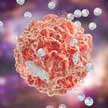
According to the World Health Organization (WHO), Cancer is the Second Leading Cause of Death Globally With An Estimate of 9.6 Million Deaths in 2018. Therefore, The Development of New Strategies for Advancing Cancer Therapy and Diagnosis Are Still Extremely Necessary in order Cancer Diseases.
Nanotheranostics is an emerging field that promised to provide new and innovative medical solutions that will add up unmet medical needs in cancer management and offers the nexte generation cancer management tool that merges both therapy and diagnostics in one system. Clinically, Nanotheranostic Approaches Promise to Diagnosis and Treat Cancer simultaneously, to Monitor Anticancer Response and Disease Progression in Real-Time, at The Molecular Level.
Graphene-based nanotechnology
the use of graphene-based matterials in pharmaceutical nanotechnology has received more attention due to their unique scheme structure and physicochemical properies-including an ultra-high surface area, optical, thermal and electrical conductivities, and a good Biocompatibility.
Graphene-based matterials are composed of graphene and graphene oxide (go) and/or derivative graphene. Graphene is a single atom-thick layer of sp2 hybridized carbon atoms arranged in a Two-dimensional (2D) lattice, while go is its oxidised counterpart. In addition, graphene is the basic building block of several other carbon allotropes, included graphite, charcoal, and carbon nanotubes.
Go nanosheets tend to be hydrophilic and the surface contains reactive groups for an increased functionality or for loading drugs through covalent and non-covalent interactions. In addition, graphene-based nanomaterials can also be functionalized with diagnostic probes that has fluorescent and/or luminescent properies and can target ligands such as proteins, peptides, nucleic acids, antibodies, lipids, carbohydrates and folic acid.
In Pharmaceutical Applications, graphene-based nanomaterials possess a lot of potential for improving drug circulation time, in target drug and gene delivery system, for acting as therapeutic agents and diagnostic tools, as well as nanotheranostic that combine booth diagnostic and therapy approaches in a single System.
Graphene-based nanotheranostics
graphene-based nanomaterials have a good biocompatibility (If Functionalized), Biodegradability and Multi-Functionalitites, which Makes Them following candidates for cancer nanotheranostics. They can also lOad Large Amants of Drug Molecules on Both Sides of the single atom layer sheet.
In A Drug Delivery System, graphene-based nanomaterials have shown the capability to carry and deliver different therapeutic agents such as small drug molecules, genes and deoxyribonucleic acid (DNA). In a recent study, pei and co-workers have successful engineed a dual-drug-beladed pegylated nano-graphene oxide to deliver mixed anticancer, cisplatin (PT) and doxorubicin (dox) in one system to improve anticancer activity.
In A Similar Study by Dr Andrea Lucherelli and Co-Worlders, They Reported that Had also Successfully Engineed A Multi-Functional Graphine-Based Nanomaterial, Functionalized With Doxorubicin, Indocyanine Green and Folic Acid. The proposals Multi-Functional graphene-based nanomaterials enhanced anticancer activity via a multi-functional approach.
The Advantage of Using Functionalized Graphened-Based Nanomaterials With Folic Acid-Targeting Agent-Was to Enhance the Delivery of Anticancer (IE Dox) To the Targeted Cancer Cells or to Whre It Will Be Most Effective, in this case in the nucleus.
In A Clinical Setting, Targeted Drug Delivery System Approaches Can Reduce the Frequency of Drug Administration To The Patient, Reducing The Number of Adverse Systemic Side Effects and Improving Drug Efficient. In Addition, it will lead Into Fewer Medications, Lower Costs, Better Medication, and Ultimately, Better Patient Compliance.
The Advantage of Using Functionalized graphened nanomaterials with Indocyanine Green—A Fluorescent Probe—is to track the Cellular Uptake and/Or Internalization of the Anticancer Drug Inside The Targeted Cancer Cells. In an in-vivo and/or clinical Setting, Functionalized graphene-based nanomaterials with a fluorescent probe, or imaging agent, can assist in monitoring the cancer treatment and perform diagnostics in real-time—With just the administration of a one-unit system.
Light-based Cancer Therapy
Another Exciting Application for Graphine-Based Nanomaterials Lies Withing Light-Based Therapy. Light-Based therapy, or Phototherapy such as photothermal Therapy (PTT) and Photodynamic Therapy (PDT), Can Treat A Variety of Diseases, Including Cancer, by Employing A Specific Light Irradiation. Due to the Physicochemical Properties of Optical Absorption in the Near-Infrared Light Region, Researchers are used graphene-based nanomaterials as a pictorial agental agent cancer.
The anticancer mechanism of graphene-based nanomaterials inducing thermal and oxidative stresses to the cancer cells and/or tumor tissue. Ptt procedures employed an optical-absorbing agent to generate heat under light irradiation to destroy the cancerus tissue and/or cells. Pdt procedures requirements a photosensiter and a light source at specific wavelengths, which leads to the induction of cytotoxic reactive oxygen species (ros) that results in irreversible damage to the cancer cells and or tumor tissue.
Becuse of Their Optical Properties, graphene-based nanomaterials can be as a cancer theranostic agent, combining both phototherapy and imaging modalities in one system, to monitor the distribution of therapeutic agents and for bio-imaging tumor tissue growth in real-time.
The Next Generation of Cancer Nanotheranostics Employing Graphine-Based Nanomaterials Could Address the Many Challenges Associated With Traditional Chemotherapeutic Agents, Such As the Discussion Surrounding Poor Solibility, Harmful Side Effects, Non-Specific Drug Distribution, and Multi-Drug Resistance (MDR). In addition, it will also offered an effective multifunctional biomedical system, a 5-in-1 system that will consist of dual drug deliverry, a combined two-chemotherapy approval (EG PT and dox), Phototherapy (PTT or PDT), A Diagnosis Or Imaging Agent (EG Fluorescent or Luminescent or Luminescent Probe), and a nanomaterial that has a good biocompatibility - all in one system.
